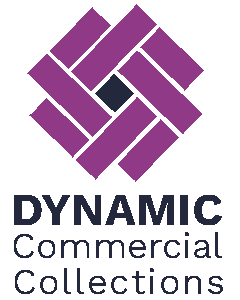
25 Feb How Can Debt Collectors Find You?
Debt collectors can charge businesses and lenders up to 30% of the debt value to find debtors, meaning it’s in the interest of their wallets to use every legal means at their disposal to find you if you owe money.
The Australian Competition and Consumer Commission (ACCC) has strict rules for how debt collectors can contact debtors. They can only reach out three times per week or ten times per month. Most Australian businesses and lenders bring in debt collectors when payments are 90-120 days overdue. Debt collectors can ask the courts to approve different tracking methods when standard contact fails.
Unfortunately, avoiding contact won’t make your debt vanish. If you don’t engage with a collector and start repaying your debts, legal action can be taken against you, which could affect your credit history for up to twelve years.
In this article, we’ll take a look at the methods debt collectors use, their legal limits and their ability to track people down.
How Debt Collectors Track People
Debt collectors use sophisticated methods to track down people who haven’t paid their debts. Their tracking techniques have evolved substantially with new technology.
Traditional contact methods
Initially, debt collectors try to reach debtors through standard communication channels. They can call the debtor at home between 7:30am – 9pm on weekdays and 9am – 9pm on weekends. Face-to-face contact is allowed from 9am – 9pm daily, except during national holidays.
Digital tracking techniques
Today’s debt collectors rely on advanced digital tools to find people. They often check social media profiles on Facebook and LinkedIn to learn about someone’s job status and location. They might also use reverse phone directories and email tracking systems to verify contact information.
Legal Methods of Contact
Strict guidelines govern how debt collectors can contact debtors and third parties. A clear understanding of these limits helps collectors and debtors work through the process smoothly.
Workplace verification
Debt collectors can reach out to a debtor’s workplace to confirm employment status, business title and business address. They can make these contacts during regular business hours or between 9am – 5pm on weekdays. The collector must stop all communication if the employer does not allow such contact.
Third-party communications
Debt collectors can communicate with specific third parties under certain conditions. They may contact:
- The debtor’s attorney
- Consumer reporting agencies
- The creditor
- The creditor’s attorney
- The debt collector’s attorney
Collectors must follow strict rules when they contact friends or family members. They can only ask for the debtor’s location details. The conversation must focus on getting the debtor’s home address, phone number or workplace information.
Court-approved tracking
Standard methods sometimes fail to locate debtors. In such cases, collectors can ask the court to approve different tracking approaches. They must try all standard communication channels before requesting these additional permissions.
Courts might authorise specific solutions like examination hearings, instalment orders or garnishment arrangements. Collectors cannot threaten legal action without proper authority or permission to pursue such measures.
Common Sources of Information
Original creditor records
Debt collectors receive key information from the original creditor’s account records when they start collection efforts. This data includes the debtor’s name, current address, phone number and details about outstanding balances.
Creditors need to keep detailed records of all debtor communications, covering:
- Payment histories and transaction records
- Original contracts and credit agreements
- Past correspondence and notices
- Account statements and invoices
- Contact information updates
- Credit reporting databases
Credit reporting agencies help debt collectors with valuable information, though strict rules control database access. Collectors can only get specific personal details from credit reports. The access limits them to:
- Identifying information about individuals
- Details about overdue payments
- Information about court judgments and bankruptcy orders
The ACCC and Australian Securities and Investments Commission (ASIC) have strict rules about credit reporting access. Collectors must work through the original creditor to access these databases unless they own the debt.
These information sources let collectors check the debtor’s identity and confirm if the debt is legitimate before making contact. This organised approach keeps collection efforts focused while following privacy rules.
Public records search
Public records are regularly used by debt collectors to gather essential information. They can access:
- Motor vehicle department records
- Electoral rolls
- Property ownership documents
- Court records
- Bankruptcy filings
Debt collectors can also ask utility companies about service connections and final billing addresses. In addition, credit reporting databases give them access to monthly updates from the postal service about potential address changes.
However, it is important to note that standard methods don’t always work. In such instances, collectors often turn to skip tracers who use specialised databases and investigative techniques to find people. These professionals access multiple data sources and achieve recovery rates of 20-30% on average.
Social Media and Online Presence
Social media platforms have proven themselves as powerful tools for debt collectors to find people who owe money. Thanks to social media, collectors now have an 18.5% better chance of getting repayments. However, collectors have limits on their social media use:
- Messages must be private and not viewable by friends or followers
- Collectors must identify themselves before sending friend requests
- Debtors must have the option to block future communications
- Public posts about debt are strictly prohibited
- Digital footprint tracking
To get repayments, debt collectors examine the many layers of a debtor’s online presence. They study digital footprints such as social media profiles, web cookies and online behaviour patterns.
Digital footprint tracking helps collectors check employment details and better assess financial status. This information reveals patterns in spending habits and online activities, which makes it easier for them to find and contact debtors.
Privacy regulations and fair debt collection practices still control how digital footprint data gets collected. For example, collectors can’t stalk or pressure people using social media information.
Avoid Debt Collection Altogether with Dynamic Commercial Collections
Knowing how debt collectors can track people gives you a better understanding of your rights and duties. These professionals combine old-school contact methods with cutting-edge digital tracking while following strict legal guidelines.
The law sets clear rules about when and how often collectors can contact you. They have plenty of tools like public records, credit databases and social media to find people. The best approach is to deal with the situation head-on while knowing what Australian law says about your rights.
With over a decade of experience assisting individuals and businesses in all things debt recovery and collection, the team at Dynamic Collections is here to help. We believe that all debts should be collected ethically and professionally. Contact the team today.



Sorry, the comment form is closed at this time.